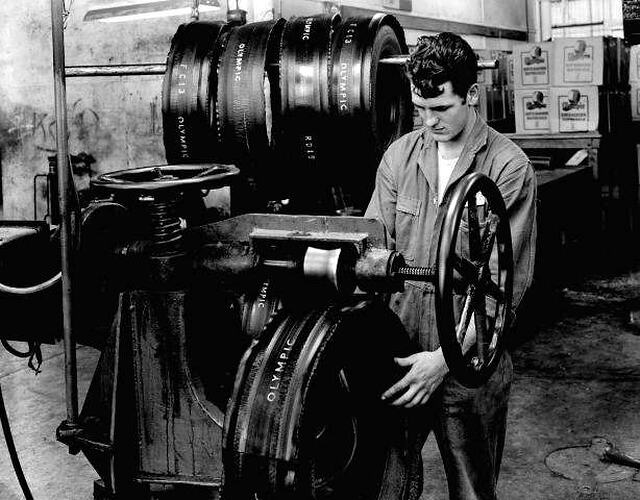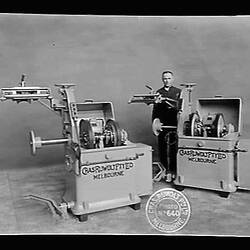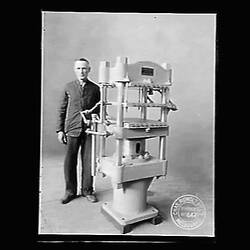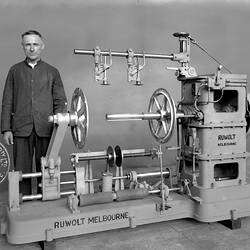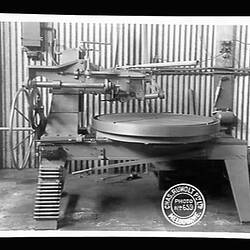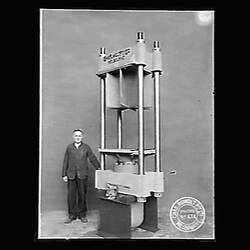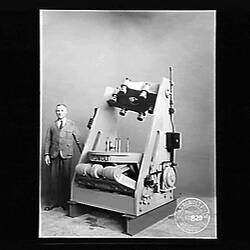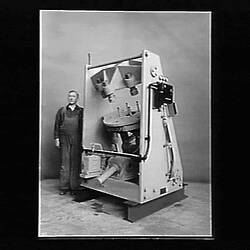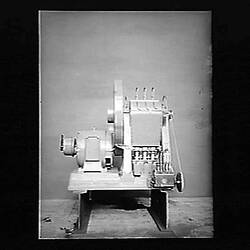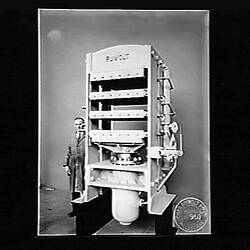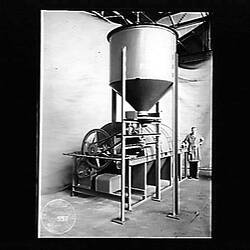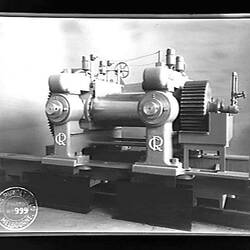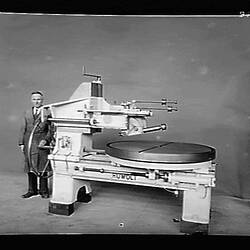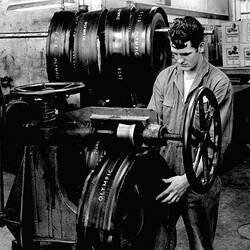Summary
Black and white 5" x 4" negative showing a process worker operating a tyre building machine at Olympic Tyre and Rubber Company in 1961.
This image is part of the Laurie Richards Collection at Museum Victoria comprising approximately 85,000 negatives taken by the Melbourne based Laurie Richards Studio between the 1950s -1970s. These negatives are all mostly large format [5"x 4"/ 12.5 x 10 cm], black and white images, though a significant number are in colour. The many photographic jobs that were undertaken in the course of thirty years are itemised in a set of log books, copies of which are also held by Museum Victoria.
Laurie Richards was a professional photographer who began his career as a photo-journalist, working for the Advertiser newspaper in Adelaide, and the Argus and the Herald newspapers in Melbourne. In 1953, he opened his own business and set up a photographic studio at his home at 4 Tower Avenue, Alphington, an inner suburb of Melbourne. At its peak, in the late 1960s, the Laurie Richards Studio was one of Melbourne's pre-eminent commercial photographic studios, employing twelve photographers. The Laurie Richards Studio worked mainly in advertising and public relations, and had a broad clientele which included commercial companies, government institutions and the entertainment industry.
Description of Content
A worker operating a tyre machine at Olympic Tyre and Rubber Company, Cross St, West Footscray. The man is applying tread rubber to the tyre. This is one of the final processes in tyre manufacture before the 'green' tyre is vulcanised or shaped.
Physical Description
Black and white 5" x 4" photographic negative
Significance
Because of the breadth of both the subject matter photographed and the diverse businesses which commissioned the work, and the excellent documentation that accompanies the collection, the Laurie Richards Collection at Museum Victoria is an invaluable record of Melbourne's commercial and industrial past and as such gives an insight into the social history of that period.
More Information
-
Collection Names
-
Collecting Areas
-
Acquisition Information
Purchase
-
Place & Date Depicted
Cross Street, West Footscray, Greater Melbourne, Victoria, Australia, 12 Jul 1961
-
Photographer
Laurie Richards Studio, 4 Tower Avenue, Alphington, Greater Melbourne, Victoria, Australia, 1961
-
Organisation Depicted
-
Format
Negative, 5" x 4", Black & White
-
Brand Names
-
Classification
Road transport, Motor vehicles - maintenance, Tyre retreading
-
Category
-
Discipline
-
Type of item
-
Image Dimensions - Negative/s
103 mm (Width), 100 mm (Height)
-
Keywords
Factories, Industrial Equipment, Manufacturing Workers, Motor Cars, Production Lines, Protective Clothing & Safety Wear, Tyres
